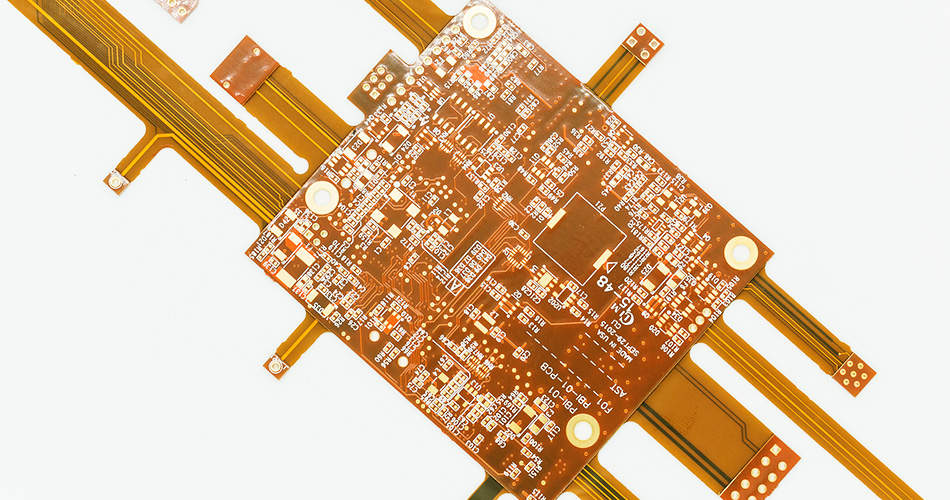- English
- Español
- Português
- русский
- Français
- 日本語
- Deutsch
- tiếng Việt
- Italiano
- Nederlands
- ภาษาไทย
- Polski
- 한국어
- Svenska
- magyar
- Malay
- বাংলা ভাষার
- Dansk
- Suomi
- हिन्दी
- Pilipino
- Türkçe
- Gaeilge
- العربية
- Indonesia
- Norsk
- تمل
- český
- ελληνικά
- український
- Javanese
- فارسی
- தமிழ்
- తెలుగు
- नेपाली
- Burmese
- български
- ລາວ
- Latine
- Қазақша
- Euskal
- Azərbaycan
- Slovenský jazyk
- Македонски
- Lietuvos
- Eesti Keel
- Română
- Slovenski
- मराठी
- Srpski језик
Flexible circuit design in PCBA processing
2024-08-08
Flexible circuit board plays an important role in PCBA processing. It is soft, thin, and bendable. It is suitable for electronic products that need to bend, fold or have a small space. This article will discuss the design of flexible circuits in PCBA processing, including design principles, application fields, advantages and design considerations.

1. Design principles
The principles of flexible circuit design mainly include:
Flexible substrate: Flexible substrates such as polyimide (PI), polyester film, etc. are used to make the circuit board flexible.
Thin design: Thin design is used to reduce the thickness of the circuit board and improve flexibility.
Bending structure: Design a suitable bending structure so that the circuit board can be bent and folded without affecting performance.
2. Application field
Flexible circuit design is widely used in various fields of PCBA processing, including:
Mobile devices: such as smart phones, tablets, etc., the use of flexible circuit boards can adapt to the bending and compact design of the equipment.
Medical equipment: such as medical monitoring equipment, wearable medical devices, etc., flexible circuit boards can adapt to the curves of the human body and improve comfort.
Automotive electronics: Flexible circuit boards can be used for control systems and display screens inside cars, adapting to vehicle curves and space limitations.
Aerospace: In the field of aerospace, flexible circuit boards can be used for control systems and communication equipment inside spacecraft.
3. Advantages
Flexible circuit design has the following advantages in PCBA processing:
High space utilization: Flexible circuit boards can be bent and folded according to the space limitations of the equipment to improve space utilization.
Lightweight and thin: Compared with rigid circuit boards, flexible circuit boards are lighter and thinner, suitable for lightweight design.
High reliability: Flexible circuit boards use flexible substrates, have good bending and folding performance, and high reliability.
4. Design considerations
When designing flexible circuits, pay attention to the following matters:
Bending radius: Reasonably design the bending radius to avoid circuit board breakage or electrical performance problems caused by too small a radius.
Interlayer connection: The interlayer connection of flexible circuit boards should use flexible wiring or reinforcement design to improve connection reliability.
Environmental adaptability: Consider the equipment use environment, select suitable flexible substrates and materials, and improve environmental adaptability.
Conclusion
Flexible circuit design is of great significance in PCBA processing. It can meet the needs of electronic products for lightness, softness, and high reliability, and is suitable for electronic products in various fields. Through reasonable design principles, a wide range of application fields, superior advantages, and design considerations, flexible circuit design can be better applied in PCBA processing, promoting the development of the electronics industry in a more flexible and efficient direction.
-
Delivery Service






-
Payment Options









